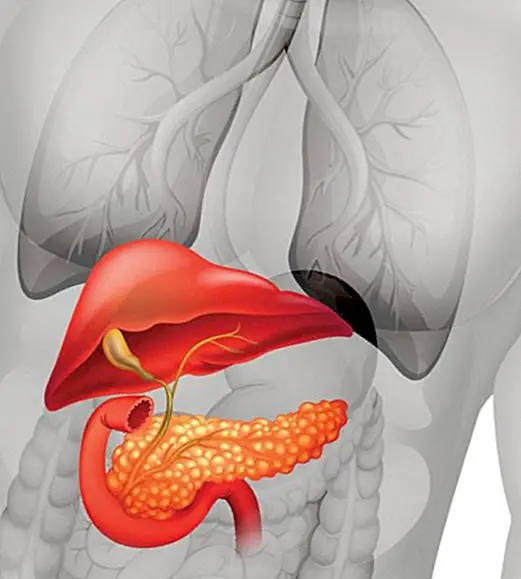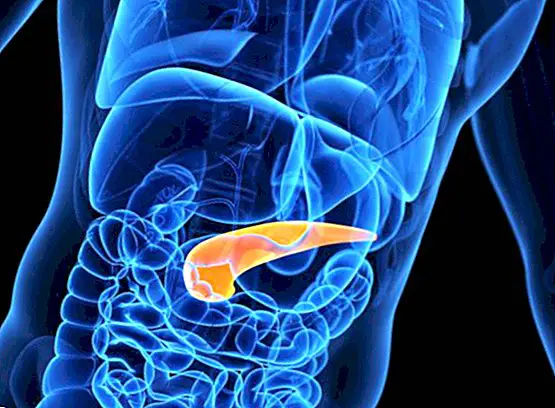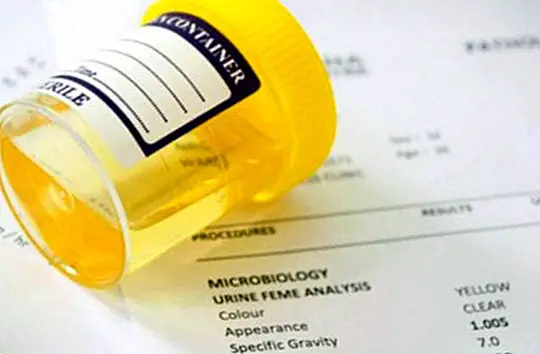Amylase and lipase test in blood and urine: what it is, what it is for and normal values
As you surely know, a routine blood and urine analysis helps us to know a little more about our state of health, and above all, it will alert us about the possible existence or not of any pathology.
What is really positive about it is that it is a methodology that is really very little invasive, almost painless and without risk for the patient, which provides the doctor with valuable information.

Basically in the blood or urine analysis we find a series of parameters that are analyzed and included always. This is the case of elements such as high creatinine, glucose waves transaminases.
However, there are also other parameters that, although they provide us with important information, are not analyzed or included in the analysis until the doctor requests them, either because they suspect the existence of a pathology depending on the symptoms of the disease. patient, or when he has already been diagnosed with it and a control is followed.
It is the case of amylase and of the lipase, two elements that have a special relationship with the pancreas, and that are not analyzed until there is no suspicion that there may be a problem in the pancreas.
What is amylase?
Amylase is a pancreatic enzyme that helps digest carbohydrates. It is produced both in the pancreas and in the salivary glands, although it is also produced to a lesser extent by the liver and the fallopian tubes (in the case of women).

Although we find amylase in the blood (amylassemia), and when there is no pancreatic problem, its values tend to be normal, it is eliminated by urine (amylasuria).
And the lipase?
Lipase is also an enzyme (protein) that is produced especially in the pancreas, and that is secreted inside the small intestine. It is in this place where it helps the decomposition of fats ingested through food, to finally turn them into both fatty acids and glycerol.
As with amylase, in the blood we also find lipase, although in small amounts. Therefore, the analysis of lipase is useful to discover if there are high levels of this enzyme.

What is the test for amylase and lipase in blood?
Both the analysis of amylase and lipase in blood is very useful to discover if there is any dysfunction in the pancreas. And is that these two enzymes tend to rise in the blood when the person has a pancreatic condition.
For example, the elevation of amylase and lipase, especially together, may indicate the presence of a lesion in the pancreas, a pancreatitis (inflammation of the pancreas), stones or stones in the pancreas, or a blockage of the pancreatic duct.
Both tests are also useful to monitor and control the evolution of people affected by cystic fibrosis, a genetic disease that produces thick, dense mucus in the lungs and pancreas, obstructing the various ducts and causing repeated lung infections and problems absorbing nutrients in the lungs. small intestine.
In the particular case of lipase, it also tends to rise in case of celiac disease (autoimmune condition in which the intestine damages itself when exposed to wheat and other cereals), or by the presence of an inflammatory bowel disease.
What are the normal values of amylase and lipase in blood and urine
The ranges of the normal values of the different parameters analyzed in a blood or urine test may vary slightly between different laboratories. However, normal values can be set for both parameters:
- Normal values of amylase in blood:from 23 to 85 units per liter (U / L). In some laboratories, the normal range ranges from 40 to 140 U / L.
- Normal values of lipase in blood:from 0 to 160 units per liter (U / L).
- Normal values of amylase in urine:from 2.6 to 21.2 international units per hour (UI / h).
- Normal values of lipase in urine:Less than 5 units per liter (U / L)

Main causes of abnormal values of amylase and lipase
- Causes of high amylase:acute pancreatitis, cholecystitis, mumps, obstruction of the salivary glands, intestinal occlusion, obstruction of the biliary tract or pancreas, perforated ulcer, ectopic pregnancy, macroamylasemia and severe gastroenteritis.
- Causes of low amylase:damage in the pancreas, nephropathy, toxemia of pregnancy and pancreatic cancer.
- Causes of high lipase:obstruction or blockage of the intestine, celiac disease, duodenal ulcer, acute or chronic pancreatitis, pancreatic cancer or cystic fibrosis.
- Causes of low lipase:family deficiency of lipoprotein lipase.
As we can see, the analysis of lipase and amylase is only carried out at the doctor's request, so they are not parameters that are routinely or basicly included. In any case, they become two useful elements that provide valuable information.
Urine amylase test
Besides of blood amylase test you can also make a urinary amylase analysis. It is very useful to know and measure how much amylase exists in the urine. To do this, a urine sample is needed, but the test can be carried out with a single urine sample or a 24-hour urine collection.
What is the purpose of the analysis of amylase in urine
It is useful to know the state of the pancreas, especially if the doctor may suspect that the pancreas is not functioning properly. Therefore, when the person has pancreatitis (especially if it is chronic pancreatitis), as it helps monitor the disease or check whether the medical treatment is working properly and as it should.
Normal values of amylase in urine
The normal range of amylase in urine comprises 2.6 to 21.2 IU / h(international units per hour). However, as with all analyzes, these normal values may vary from one laboratory to another.
And what about the abnormal values of amylase in urine?
When the urinary amylase values are elevated (that is, they are above 21.2 IU / h) is a medical condition known by the name of amylasuria, and may be a sign of a wide variety of diseases and conditions, among which we can mention: acute pancreatitis, pancreatic cancer (also lung and ovarian cancer), intestinal occlusion, pelvic inflammatory disease, peptic ulcer, infection of the salivary glands, ectopic tubal pregnancy or cholecystitis, among others.

Urine lipase test
Besides of blood lipase analysis There is also a urine lipase test, especially useful to complete the medical study. Therefore, it continues to be equally useful for study pancreas disorders.
The reason is that, for example, after a pancreatitis, within 4 to 8 hours later, the activity of lipases increases. So it is useful to discover if pancreatitis has been treated properly, or if there is any other pathology.
Normal values of lipase in urine
The usual in this case is the realization of a 24-hour urine collection, since it is the best way to measure the values of lipase in the urine. Thus, any value below 5 U / L is considered normal.
Why does lipase increase in urine?
Any value of lipase in urine above the amount considered normal means that there may be pancreatitis, gallstones, pancreatic cysts, peritonitis or strangulation or infarction of the intestine. This article is published for informational purposes only. It can not and should not replace the consultation with a Physician. We advise you to consult your Trusted Doctor. ThemesBlood test


